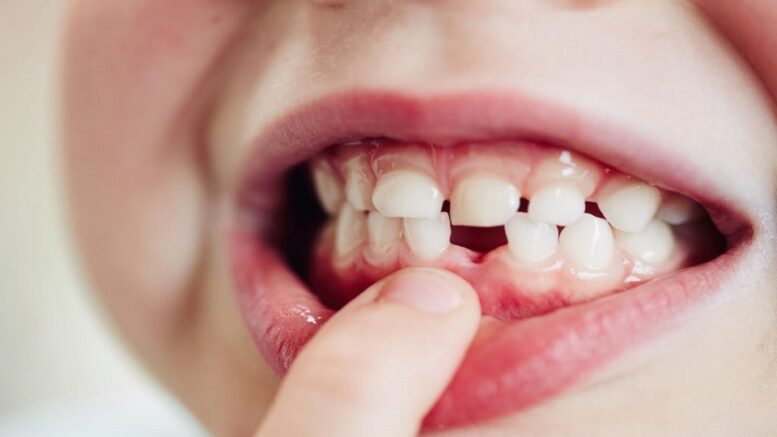Orthodontic issues refer to any problems or irregularities with the positioning of our teeth or jaws. Our gums, jaws, and teeth are genetically created in alignment with our skull and bone structure. These orthodontic issues can disturb the arrangement of our jaws and teeth. These problems can affect people of all ages and can have a significant impact on the appearance and function of the mouth. Common orthodontic issues include crowded teeth, overbites, under and overbites, and gaps between teeth. According to the American Association of Orthodontists, 27 percent of the American population, mostly comprising adults, suffer from orthodontic problems.
One common orthodontic issue is malocclusion, which refers to misaligned teeth or a misaligned bite. Malocclusion can be caused by various factors, such as genetics, tongue thrusting, thumb-sucking, or an early loss of primary teeth. It can lead to several problems, including difficulties in basic day-to-day activities such as speaking or chewing. It can lead to an increase in the risk of tooth decay and gum disease and may negatively impact an individual’s self-esteem.
The cost of orthodontic treatments may vary from state to state. For instance, the cost of braces in Florida ranges from $4000 to $7000. The state falls in the list of nine states considered no-income tax states. Orthodontic treatments won’t seem costly if you live in a city like St. Petersburg, where the average cost of living is lower than the national average.
Of course, if your health insurance covers dental treatment, searching for a top orthodontist in St. Petersburg, Florida is the best way to go.
In this article, we’ll explore the most common orthodontic issues and provide tips for preventing them.
Common Orthodontic Issues
Crowded Teeth:
Crowding or overcrowding of teeth occurs due to a lack of space in the mouth. Each tooth takes its own space in the mouth, and in this situation, the teeth begin to take up more space disturbing the entire alignment. This can cause teeth to become twisted, crooked, or overlapping, making brushing and flossing properly difficult. Crowded teeth can also make it harder to chew food and can lead to issues with the alignment of the jaws.
Overbite:
An overbite occurs when the upper front teeth overlap the lower front teeth. This can cause speech problems, jaw pain, and headaches. Overbites can also lead to teeth grinding, which can damage the teeth and cause further pain and discomfort. Furthermore, it can also have a negative impact on a person’s self-confidence. They may think they are not pleasant to look at from a societal point of view, which may lower their self-esteem.

Underbite:
An underbite is the exact opposite of an overbite. An underbite occurs when the lower front teeth overlap the upper front teeth. This can cause difficulty with chewing and speaking, as well as jaw pain and headaches. Underbites can also lead to an increased risk of tooth decay and gum disease.
Gaps Between Teeth:
Gaps between teeth can be caused by various factors, including genetics, injury, or gum disease. These gaps can make it difficult to chew and speak properly and make the teeth more susceptible to decay and gum disease. It also leads to food getting stuck in the mouth, which can stay there for a long time if the person doesn’t brush properly or floss regularly. The food particles can stay stuck for a while and eventually rot, resulting in bad breath.
Tips for Preventing Orthodontic Issues
Maintain Good Oral Hygiene:
One of the easiest yet most effective things you can do to prevent orthodontic issues is to maintain optimum oral hygiene. It cannot be emphasized enough how crucial this is, and yet many people don’t prioritize their oral health and the conditions of their mouth. This includes brushing your teeth at least twice daily, flossing regularly, and visiting your dentist for regular checkups and cleanings. It also includes occasional scaling and teeth whitening procedures if your teeth require advanced protection. By keeping your teeth and gums healthy, you can reduce your risk of developing gum disease, which can lead to tooth loss and other orthodontic problems.
Avoid Hard and Sticky Foods:
Foods that are hard to chew and have a sticky texture can damage braces, Invisalign, and other orthodontic appliances, leading to costly repairs and delays in treatment. To prevent these issues, avoid hard and sticky foods such as hard candies that can get stuck in your teeth and gums, popcorn, and chewing gum. Instead, opt for softer foods like steamed vegetables, mashed potatoes, and soups. Drink water, too. Stay hydrated not because it is good for your overall health but your oral health too.
Wear Protective Gear:
If you play sports or engage in other activities that could injure your teeth or jaws, be sure to wear protective gear, such as a mouthguard. This can help prevent broken or knocked-out teeth and other injuries leading to orthodontic issues. The protective gear is an excellent and efficient way to safeguard your teeth and avoid something unfortunate from happening.
Visit an Orthodontist:
If you are experiencing severe orthodontic issues, it is important to visit an orthodontist as soon as possible. Don’t delay this because it can worsen your situation. An orthodontist can evaluate your teeth and jaws and recommend the best course of treatment to address any issues. They will provide the best advice on the way forward regarding your oral health. If you feel like there’s a problem, don’t sit on it. Take it up with a professional at your earliest.
Address Issues Early:
The earlier you address orthodontic issues, the easier they are to treat. If you notice issues with your teeth or gums, bring them to the attention of your dentist or orthodontist as soon as possible. This can help prevent further damage and make treatment more effective.
Conclusion
In conclusion, orthodontic issues can significantly impact the appearance and function of the mouth. Fortunately, you can take steps to prevent these issues from developing or worsening. By maintaining good oral hygiene, avoiding hard and sticky foods, wearing protective gear, and visiting your oral doctor at least once a month, you can ensure your pearly whites stay healthy and bright.
